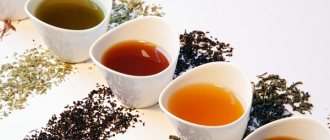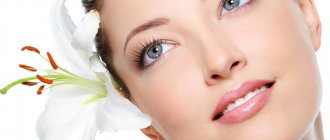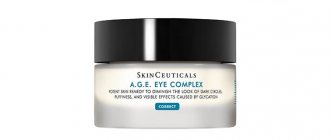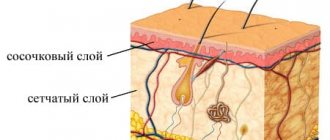Using formic alcohol for acne, you can achieve a significant improvement in the condition of the epidermis by reducing the production of sebum. With the help of the antibacterial properties of the drug, the skin is cleansed of potentially dangerous microorganisms, and the tissues receive more oxygen. This leads to an improvement in lipid metabolism, condition and color of the epidermis. The product also has a positive effect on the condition of blood vessels, improves blood circulation, which helps the skin regenerate faster, and starts the self-cleansing process.
Composition and release form
100 grams of formic alcohol contains 1.4 g of formic acid. The rest of the composition is ethyl alcohol and purified water. The product has the form of a colorless transparent liquid, which is characterized by a pungent odor. In nature, formic acid is found in the glands of bees and ants, as well as in conifers and nettles. Despite this, the main methods of its extraction are the oxidation of methyl alcohol and the decomposition of oxalic acid esters.
Formic alcohol is sold in glass bottles of 50 and 100 ml, which are packaged in cardboard boxes.
The mechanism of action of formic alcohol on acne
Since the product has a pronounced drying effect, it should be used only for oily and combination skin. When the solution gets on the skin, it provokes irritation of receptors and dilation of blood vessels. The drug relieves swelling, inflammation, pain, improves blood flow, and destroys bacteria. The skin takes on a natural, healthy appearance. The drug is used exclusively externally.
When applying the product, the reflex reaction is activated, vascular permeability is improved, and pain is regulated.
It is very important to apply alcohol pointwise, that is, only to areas of damage. This is due to the fact that when ethanol gets on healthy skin, it simply dries it out, as a result, it loses its natural protective layer and becomes vulnerable.
Mechanism of action
A well-chosen combination of formic acid and ethanol allows you to tidy up your face or body skin in a short time and get rid of blackheads, pimples and acne. The product has a complex effect:
- antibacterial,
- drying,
- anti-inflammatory,
- locally irritating
- vasodilator
- decongestant.
As a result of the effect of an alcohol solution on epidermal tissue, microcirculation of blood and intercellular fluid improves, and the supply of cells with nutrients and oxygen is activated. The drug destroys pathogenic agents, accelerates tissue regeneration, relieves pain and inflammation, cleanses pores and removes blackheads. After the course of treatment, the skin becomes smooth and takes on a healthy appearance.
Indications for use
Acne is far from the only area in which the product is used. It is also used as a rub to relieve pain that accompanies diseases of the spine and joints.
The anti-inflammatory and analgesic properties of formic alcohol allow it to be used for the following conditions:
- rheumatism;
- neuralgia;
- myalgia;
- osteochondrosis;
- arthrosis;
- spasms and cramps in muscles;
- bruises;
- muscle and tendon strains;
- neuritis;
- injuries.
In all these conditions, formic alcohol acts as an anesthetic.
The solution is characterized by an aggressive effect on the skin, so it is often used to combat unwanted body hair. In this case, the treated area should be cleaned, moistened with the solution and rinsed with water after 15 minutes. You can also add the product to body cream. In this way you can avoid drying out the skin.
Advantages and disadvantages
An alcohol solution, compared to other disinfectants and anti-inflammatory medications, has a number of advantages:
- Availability . The drug can be purchased at any pharmacy.
- Budgeting . A bottle of 100 ml costs no more than 18-22 rubles.
- Efficiency . In a short period of time, the product relieves inflammation, accelerates the healing of pustules, minimizes the secretion of sebum and tightens pores.
- Economy . To treat problem areas of the skin, a small amount of alcohol is required, so even a small bottle of 50 ml will last for a long time.
- Multifunctionality . The medicine not only gets rid of acne. It can be used as an antiseptic for treating the skin for injections and insect bites, for rubbing against neuralgia, arthralgia and myositis. At home, alcohol is better than household chemicals for cleaning glass and mirrors.
However, we must not forget about the disadvantages inherent in an alcohol-containing product. When the drug is abused, skin cells become dehydrated, lose local immunity and become defenseless against pathogenic bacteria and fungi. Careless use of the drug can cause the appearance of red or flaky spots on the skin of the face and body, a feeling of tightness, allergic reactions and chemical burns.
Principles of application
The product is applied pointwise to the affected areas using a cotton swab or disk. Pre-cleansing the skin is not recommended, as this can cause excessive moisture loss. It is necessary to wait until the solution has completely dried, then apply a mask or moisturizer to the skin.
Despite the beneficial properties of formic alcohol for acne, it is not recommended to overuse it. Initially, you can use the product once a day, and when a positive result becomes noticeable, you need to switch to 2-3 applications per week. The duration of its use should not exceed two months.
When using formic alcohol for acne at home, you can add it to masks for a milder effect.
For clarity, here are recipes for effective masks against acne:
- Mix a tablespoon of aloe juice with egg white, add 5 drops of formic alcohol. Apply to face and rinse with warm water after 20 minutes. It is recommended to perform the procedure no more than 2 times a week.
- Mix a tablespoon of white clay with a teaspoon of formic alcohol. For a creamy consistency, add water. The mask should work on the skin for 5-7 minutes, after which it should be washed off with warm water.
Alcohol for acne is not a basic skin care ingredient, so its use is advisable until the acne is cured. Further use of the product is not recommended. Also, while using the solution, it is necessary to monitor the skin reaction. It is possible to alternate formic alcohol with milder anti-acne products.
Reviews
Alina, 25 years old, Simferopol: “I have been using formic alcohol since I was 14 years old, when during puberty my entire face was covered with an ugly acne rash. My mother taught me how to burn pimples correctly so as not to harm healthy areas of the skin. Since then, I always keep this cheap and effective remedy on hand so that, if necessary, I can treat single acne that regularly appears before the onset of my period.”
Svetlana, 19 years old, Ryazan: “Alcohol with formic acid is an indispensable remedy for our entire family. I first started using it to combat teenage acne. It took several days for the emerging acne to dry out and disappear. But this drug is not suitable for my mother, because she has dry skin. But she periodically uses alcohol to rub her sore joints when they start to hurt in damp weather.”
Contraindications for use
Contraindications to the use of the drug are:
- skin damage (scratches, wounds, etc.);
- hypersensitivity to the components of the drug;
- pregnancy and lactation (the drug has not undergone clinical trials);
- dermatitis, eczema.
The drug should not be applied to mucous membranes, as alcohol can cause severe irritation and burns. The product is not used for children under 16 years of age.
It is recommended to use alcohol solutions only for oily and combination skin. Those with normal to dry skin types should give preference to more gentle anti-acne products. In this case, alcohol can be used in masks, talkers, and creams.
It is also not recommended to use the solution to prevent acne. Formic acid is a rather aggressive agent, so it can cause a number of unpleasant consequences, for example, a burn of the skin, which will have to be treated with medications.
Undesirable consequences
The attitude towards ethyl alcohol in the field of medicine is ambiguous. Some doctors are of the opinion that it is better for a person not to come into contact with this substance at all. If you apply formic alcohol not pointwise (as experts advise), but affect healthy areas, the following changes occur in the skin:
- The hydrolipid layer, which protects the skin from the penetration of dirt and various microbes, is destroyed. Under the influence of alcohol, this film is temporarily burned, and the body becomes temporarily vulnerable. Although formic alcohol for acne is a relatively safe remedy, nevertheless, it is highly undesirable to abuse it.
- The cells in the upper layer of the skin die. Since the protective layer is damaged, intensive keratinization of epidermal cells, which are part of the hydrolipid film, begins.
- Fat begins to be released in even greater quantities. After damage to the protective layer of the skin, the body receives a corresponding signal, as a result of which the glands begin to intensively secrete sebum to create a new hydrolipid layer. Alcohol only dries out the skin for a while, after which it becomes even more oily.
Cell death and excess sebum lead not only to increased oiliness of the skin, but also to flaking. Thus, formic alcohol is really effective in the fight against acne, but it should be used extremely carefully and carefully. In some cases, the use of the solution may cause allergies, itching and burning of the skin. In this case, you must stop using the product.
Before using formic alcohol, it is recommended to consult a dermatologist. This is due to the fact that the drug is not advisable to use in all cases. If, for example, acne appeared in adolescence, which is most often associated with hormonal imbalance, then the use of alcohol would be a completely reasonable decision. But acne in adults can have many causes, most of which require consultation with a doctor and competent drug therapy.
Thus, applying formic alcohol is advisable only to the affected areas of the skin. The solution should be used with extreme care, since there is a risk of destruction of the hydrolipidic layer, which will lead to excess production of sebum and, accordingly, excess oily skin.
Side effects
Exposure of the skin to aggressive components, ethanol and formic acid, can cause redness, itching, and a local allergic reaction in the form of a rash or irritation. But the most dangerous thing for the skin of the face and body is the possible destruction of the hydrolipid layer, which acts as a natural barrier and protects the epidermis from the introduction of pathogenic microflora.
Other side effects may occur from the alcohol solution:
- accelerated destruction and death of skin cells,
- intense keratinization of the upper layer of the skin,
- active secretion of sebum,
- peeling of the treated areas of the face and body.
Such symptoms are the body’s reaction to exposure to aggressive substances and an attempt to restore the destroyed hydrolipid layer. Therefore, when treating acne with formic alcohol, you should be careful and not use it on healthy areas of the skin. For the same reason, formic acid should not be used to prevent acne and acne; it is better to use more expensive but less aggressive products for the care of problem skin.










